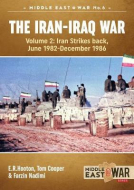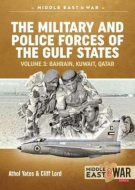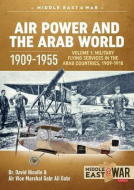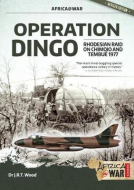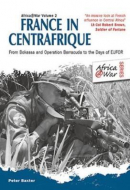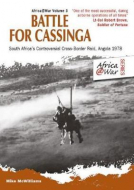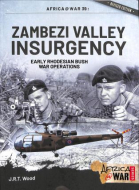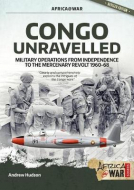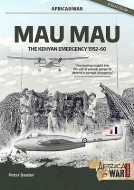
- Agriculture
- Architecture & Design
- Arts & Photography
- Biography
- Business
- Calendars and Diaries
- Childrens (All)
- Childrens (Illustrated)
- Childrens (Picture flats)
- Childrens (Te Reo)
- Classics
- Cooking, Food & Drink
- Craft & Hobbies
- Design (Art / Graphics)
- Design (Interiors)
- Education
- Fashion
- Fiction & Literature
- Fiction - Young Adult
- Gift Ideas
- Health & Wellbeing
- History
- Home & Garden
- Humour & Gift
- Instead of a Card Poems
- Military
- Music
- New Zealand
- NZ (History)
- NZ (Landscapes)
- NZ (Pictorial)
- Poetry
- Reference
- Religion & Faith
- Science & Nature
- Sport & Recreation
- Stationery
- Taschen : 40th Anniversary Edition
- Taschen : BA Basic Art
- Taschen : BU Bibliotheca Universalis
- Te Reo Māori
- Transport
- Travel
Military (455)
|
The Iran-Iraq War Volume 2 (Middle East@War 24)
ISBN: 9781913118532 Author: E R Hooton Publisher: Helion & Company Volume 2 takes up the account after Iraq withdrew from Khuzestan and is based upon material from both sides, from US Intelligence data, British Government docum... Volume 2 takes up the account after Iraq withdrew from Khuzestan and is based upon material from both sides, from US Intelligence data, British Government documents and secret Iraqi files. Iraq's withdrawal exposed the great southern city of Basra to Iranian attack but it was shielded by fortifications based upon a huge anti-tank ditch, the so-called Fish Lake, which the Iranians tried to storm in the summer of 1982. This bloody failure left Tehran in a position where prestige prevented a withdrawal into Iran but the armed forces lacked the resources to bring the conflict to a favorable conclusion. During the next four years the Iranians tried to outflank the Fish Lake defenses initially through the marshes in the north and finally through an attack on the Fao Peninsula which increased national prestige but was a strategic failure and paved the way for Iraq's massive victories in 1988. This followed a series of successful defensive battles in which the Iranians were driven back with great loss. This account describes the battles in greater detail than before and, by examining them, provides unique insights and ends many of the myths which are repeated in many other accounts of this conflict. Bind: paperback Pages: 112 Dimensions: 210 x 297 mm |
$55.00 |
|
|
UNEF The Yugoslav Contingent (Middle East@War 25)
ISBN: 9781912866410 Author: Bojan Dimitrijevic Publisher: Helion & Company Pursuing a policy of social revolution, national liberation, and non-alignment, Yugoslavia under Josip Broz Tito became involved in the Middle East in the mid-1... Pursuing a policy of social revolution, national liberation, and non-alignment, Yugoslavia under Josip Broz Tito became involved in the Middle East in the mid-1950s. Combined with some initial interest in economic and military assistance, this involvement found a positive reception among several Arab states, foremost Egypt under Gamal Abdel Nasser. Close personal ties between Tito and Nasser significantly contributed to the deployment of a contingent from the Yugoslav Popular Army (JNA) within the United Nations Emergency Force (UNEF) in Egypt, following the Suez War of 1956. Established in a hurry and deployed to Egypt in late November 1956, the JNA's part of the UNEF consisted of a reinforced reconnaissance battalion. The unit was manned by conscript soldiers and equipped with vehicles provided by the USA within the frame of the Mutual Defence Assistance Program (MDAP). The story of the unit's difficult task of entering the Sinai Peninsula right on the heels of withdrawing Israeli forces is the centerpiece of this book. While warmly welcomed by the local inhabitants, through late 1956 and all of 1957, the JNA contingent had the difficult task of reaching the demarcation lines, establishing observation posts, and making sure the cease-fire would be respected by all of the belligerents. For a force that understood itself to have a national-liberation and revolutionary role, rather than being an expeditionary military, the Yugoslav Popular Army thus went through a particularly unusual experience. The mission of the JNA's contingent with the UNEF on the Sinai came to a sudden end during the crisis leading to the June 1967 Arab-Israeli War: squeezed between the advancing Israeli forces, it had to be quickly evacuated, leaving all its heavy equipment and vehicles behind. Prepared with help of the original documentation from a host of archival sources of the former JNA, the book Yugoslav UNEF Contingent focuses foremost on the deployment immediately after the Suez Crisis of 1956. Providing detailed coverage of the much underreported closing chapter of that conflict, it is illustrated by more than 150 original photographs, most of which have never been published before. Bind: paperback Pages: 72 Dimensions: 210 x 297 mm |
$49.99 |
|
|
The Military and Police Forces of the Gulf States Volume 3 (Middle East@War 40)
ISBN: 9781912866427 Authors: Athol Yates, Cliff Lord Publisher: Helion & Company The Military and Police Forces of the Gulf States, Volume 3, covers the military, police, and selected para-military services of Bahrain, Kuwait and Qatar from ... The Military and Police Forces of the Gulf States, Volume 3, covers the military, police, and selected para-military services of Bahrain, Kuwait and Qatar from early 20th Century until 2010. Great Britain and these three states have had various mutual defence treaties since centuries. This resulted in establishment of very close ties between the British and the Sultan of Oman's armed forces. Since 1920s, the British seconded and contract personnel served with the latter services through forming, leading, advising and training them. Bind: paperback Pages: 72 Dimensions: 210 x 297 mm |
$49.99 |
|
|
Air Power and the Arab World 1909-1955 Volume 1 (Middle East@War 20)
ISBN: 9781912866434 Authors: David Nicolle, Air Vice Marshal Gabr Ali Gabr Publisher: Helion & Company At a time when multiple wars are raging across much of the Middle East, it is almost forgotten that it was Abu al-Qasim Abbas ibn Firnas ibn Wirdas at-Takurni -... At a time when multiple wars are raging across much of the Middle East, it is almost forgotten that it was Abu al-Qasim Abbas ibn Firnas ibn Wirdas at-Takurni - an Andalusian inventor, physician and engineer - who was the first person to undertake experiments in flying with any degree of success. That was back in the 9th Century A.D. Nigh on a thousand years later the Arab World's critical strategic location made it almost inevitable that these regions would be drawn into the imperial rivalries of the leading European powers, while the Ottoman Empire struggled to maintain its existing position in the area. This in turn meant that the first bombs to be dropped by military aircraft fell on Arab soil. Not surprisingly, as the Arab countries slowly achieved their independence, they too wanted to have air forces. In 1948 the first such Arab air forces were thrown into battle in an ill-fated attempt to keep Palestine as a primarily Arab country. Based on decades of consistent research, but also newly available sources in both Arabic and various European languages, and richly illustrated with a wide range of authentic photography, Volume 1 of the 'Air Power and the Arab World, 1909-1955' mini-series is telling the story of the men and machines of the first half century of military aviation in the Arab World. Bind: paperback Pages: 96 Dimensions: 210 x 297 mm |
$49.99 |
|
|
Operation Dingo (Africa@War 35)
ISBN: 9781912866816 Author: Dr J.R.T Wood Publisher: Helion & Company Startling in its innovation and daringly suicidal, Operation Dingo was not only the Fireforce concept writ large but the prototype for all the major Rhodesian a... Startling in its innovation and daringly suicidal, Operation Dingo was not only the Fireforce concept writ large but the prototype for all the major Rhodesian airborne attacks on the external bases of Rhodesian African nationalist insurgents in the neighboring territories of Mozambique and Zambia until such operations ceased in late 1979. Fireforce as a military concept is a 'vertical envelopment' of the enemy (first practiced by SAS paratroopers in Mozambique in 1973), with the 20mm cannon being the principle weapon of attack, mounted in an Alouette III K-Car ('Killer car'), flown by the air force commander, with the army commander on board directing his ground troops deployed from G-Cars (Alouette III troop-carrying gunships and latterly Bell 'Hueys' in 1979) and parachuted from DC-3 Dakotas. In support would be propeller-driven ground-attack aircraft and on call would be Canberra bombers, Hawker Hunter and Vampire jets. On 23 November 1977, the Rhodesian Air Force and 184 SAS and RLI paratroopers attacked 10,000 ZANLA cadres based at 'New Farm', Chimoio, 90 kilometres inside Mozambique. Two days later, the same force attacked 4,000 guerrillas at Tembué, another ZANLA base, over 200 kilometres inside Mozambique, north of Tete on the Zambezi River. Estimates of ZANLA losses vary wildly; however, a figure exceeding 6,000 casualties is realistic. The Rhodesians suffered two dead, eight wounded and lost one aircraft. It would produce the biggest SAS-led external battle of the Rhodesian bush war. Bind: paperback Pages: 72 Dimensions: 210 x 297 mm Publication Date: 04-09-2019 |
$49.99 |
|
|
France in Centrafrique (Africa@War36)
ISBN: 9781912866823 Author: Peter Baxter Publisher: Helion & Company France in Centrafrique explores the early colonial and post-colonial history of French Equatorial Africa with a particular emphasis on the role of the Central A... France in Centrafrique explores the early colonial and post-colonial history of French Equatorial Africa with a particular emphasis on the role of the Central African Republic in the Second World War and the Free French Movement. One of the key figures to emerge from this period, and a man who would shape the modern destiny of the Central African Republic, was Jean-Bédel Bokassa. Bokassa served alongside the Free French under General Charles de Gaulle and later in the metropolitan French military as an NCO in Indo-China. The narrative traces his ascent from these humble beginnings to his position as one of the region's most notorious dictators, exploring both his excesses of violence and personal aggrandizement and the role played by France and the wide-reaching Foccart intelligence network in his rise and fall. Baxter examines the past and present relationship of France with her erstwhile African colonial possessions, giving substance to the cause and effect of the many French interventions and the play of various individual personalities, both French and African, and how this has affected the current complexion of the region and its ongoing relationship with France. The book traces the overt and covert French military actions in the region, the rise of internal violence and insecurity and the increasing involvement of the international community in the series of coups and counter-coups that characterized the 1990s and the new century. Featured are Operation Barracuda, Operations Almandin I, II and II, Operation Boali and the various regional, international and European regional interventions. Bind: paperback Pages: 72 Dimensions: 210 x 297 mm Publication Date: 04-09-2019 |
$49.99 |
|
|
Battle for Cassinga (Africa@War 37)
ISBN: 9781912866847 Author: Mike McWilliams Publisher: Helion & Company Battle for Cassinga is the first-hand account by a South African paratrooper who was involved in the 1978 assault on the Angolan headquarters of PLAN, SWAPO's a... Battle for Cassinga is the first-hand account by a South African paratrooper who was involved in the 1978 assault on the Angolan headquarters of PLAN, SWAPO's armed wing. The battle, although a resounding success, suffered setbacks which could have proved disastrous to the South Africans had they not maintained the initiative. The improvisations made by Colonel Jan Breytenbach ensured that a flawed jump and inadequate intelligence did not adversely affect the outcome. The unforeseen Soviet-supplied SWAPO anti-aircraft guns used devastatingly in a ground role also threatened to derail the attack. A late appearance by a large Cuban/FAPLA (Angolan regulars) armored column, from the nearby town of Techamutete, threatened to engulf the lightly armed paratrooper force still on the ground. A fierce rearguard action, together with the almost suicidal actions of the South African Air Force pilots, ultimately saved the day. McWilliams examines why the South African government took the political risk in attacking 'Fortress Cassinga' in a cross-border operation that would clearly attract the ire of the world. He studies SWAPO claims that Cassinga was a refugee camp guarded by only a few PLAN soldiers, explaining why Sam Nujoma, the SWAPO leader, had no option but to perpetuate this falsehood. He looks dispassionately at all the players involved: SWAPO/PLAN and their commander Dimo Amaambo who fled the field of battle; the Cuban and FAPLA intervention; and the South African paratroopers, led by Breytenbach, who not only had to combat a determined enemy but also senior South African staff officers. Above all, it is a soldier's tale which pays homage in equal parts to the bravery of the paratroopers and the determination of the PLAN fighters who stood to their guns until annihilated. Bind: paperback Pages: 72 Dimensions: 210 x 297 mm Publication Date: 16-10-2019 |
$49.99 |
|
|
Zambezi Valley Insurgency (Africa@War 39)
ISBN: 9781912866854 Author: Dr J.R.T Wood Publisher: Helion & Company Across Africa in the post-1956 era, the aspirations of African nationalists to secure power were boosted and quickly realized by the British, French and Belgian... Across Africa in the post-1956 era, the aspirations of African nationalists to secure power were boosted and quickly realized by the British, French and Belgian hasty retreat from empire. The Portuguese, Southern Rhodesian and South African governments, however, stood firm and would be challenged by their African nationalists. Influenced by the Communist bloc, these nationalists adopted the 'Armed Struggle'. In the case of Rhodesia, the Zimbabwe African People's Union (ZAPU), led by Joshua Nkomo, took this step in 1962 after their effort to foment rebellion in Rhodesia's urban areas in 1961-62 had been frustrated by police action and stiffened security legislation. Rhodesia's small, undermanned security forces, however, remained wary as Zambia and Tanganyika had given sanctuary to communist- supplied ZAPU and Zimbabwe African National Union (ZANU) guerrillas. The Rhodesians had foreseen that the northeastern frontier with Mozambique would be the most vulnerable to incursions because the African population living along it offered an immediate target for succour and subversion. The Portuguese were not seen as a bulwark as they were clearly making little progress in their counter-insurgency effort against their FRELIMO nationalist opponents. The Rhodesians were fortunate, however, that ZAPU and ZANU chose to probe across the Zambezi River from Zambia into the harsh, sparsely populated bush of the Zambezi Valley. The consequence was that the Rhodesian security forces conducted a number of successful operations in the period 1966-1972 which dented insurgent ambitions. This book describes and examines the first phase of the 'bush war' during which the Rhodesian forces honed their individual and joint skills, emerging as a formidable albeit lean fighting force. Bind: paperback Pages: 80 Dimensions: 210 x 297 mm Publication Date: 07-11-2019 |
$55.00 |
|
|
Congo Unravelled (Africa@War 40)
ISBN: 9781912866861 Author: Andrew Hudson Publisher: Helion & Company Post-independence events in the Republic of the Congo are a veritable Gordian knot. The ambitions of Congolese political leaders, Cold War rivalry, Pan- African... Post-independence events in the Republic of the Congo are a veritable Gordian knot. The ambitions of Congolese political leaders, Cold War rivalry, Pan- Africanism, Belgium's continued economic interests in the country's mineral wealth, and the strategic perceptions of other southern African states all conspired to wrack Africa's second largest country with uprisings, rebellions and military interventions for almost a decade. Congo Unravelled solves the intractable complexity of this violent period by dispassionately outlining the sequence of political and military events that took place in the troubled country. The reader is systematically taken through the first military attempts to stabilize the country after independence and the two distinguishing military campaigns of the decade - the United Nations military operations (Opération des Nations Unies au Congo, or ONUC) to end the secession of the Katanga Province, and the Dragon Operations led by Belgian paratroopers, supported by the US Air Force, launched to end the insurgency in the east of the country - are chronicled in detail. Finally, the mercenary revolt - an event that tainted the reputation of the modern mercenary in Africa - is described. Lesser known military events - Irish UN forces cut off from the outside world by Katangese gendarmes and mercenaries, and a combined military operation in which Belgian paratroopers were dropped from US Air Force C-130 Hercules aircraft and supported by a mercenary ground force to achieve humanitarian ends - go far toward resolving the enigma surrounding post-independence Congo. Bind: paperback Pages: 72 Dimensions: 210 x 297 mm Publication Date: 07-11-2019 |
$49.99 |
|
|
Mau Mau (Africa@War 41)
ISBN: 9781912866878 Author: Peter Baxter Publisher: Helion & Company The Second World War forever altered the complexion of the British Empire. From Cyprus to Malaya, from Borneo to Suez, the dominoes began to fall within a decad... The Second World War forever altered the complexion of the British Empire. From Cyprus to Malaya, from Borneo to Suez, the dominoes began to fall within a decade of peace in Europe. Africa in the late 1940s and 1950s was energized by the grant of independence to India, and the emergence of a credible indigenous intellectual and political caste that was poised to inherit control from the waning European imperial powers. The British on the whole managed to disengage from Africa with a minimum of ill feeling and violence, conceding power in the Gold Coast, Nigeria and Sierra Leone under an orderly constitutional process, and engaging only in the suppression of civil disturbances in Nyasaland and Northern Rhodesia as the practicalities of a political handover were negotiated. In Kenya, however, matters were different. A vociferous local settler lobby had accrued significant economic and political authority under a local legislature, coupled with the fact that much familial pressure could be brought to bear in Whitehall by British settlers of wealth and influence, most of whom were utterly irreconciled to the notion of any kind of political handover. Mau Mau was less than a liberation movement, but much more than a mere civil disturbance. Its historic importance is based primarily on the fact that the Mau Mau campaign was one of the first violent confrontations in sub-Saharan Africa to take place over the question of the self-determination of the masses. It also epitomized the quandary suffered by the white settler communities of Africa who had been promised utopia in an earlier century, only to be confronted in a post-war world by the completely unexpected reality of black political aspiration. This book journeys through the birth of British East Africa as a settled territory of the Empire, and the inevitable politics of confrontation that emerged from the unequal distribution of resources and power. It covers the emergence and growth of Mau Mau, and the strategies applied by the British to confront and nullify what was in reality a tactically inexpert, but nonetheless powerfully symbolic black expression of political violence. That Mau Mau set the tone for Kenyan independence somewhat blurred the clean line of victory and defeat. The revolt was suppressed and peace restored, but events in the colony were nevertheless swept along by the greater movement of Africa toward independences, resulting in the eventual establishment of majority rule in Kenya in 1964. Bind: paperback Pages: 56 Dimensions: 210 x 297 mm Publication Date: 30-11-2019 |
$49.99 |


